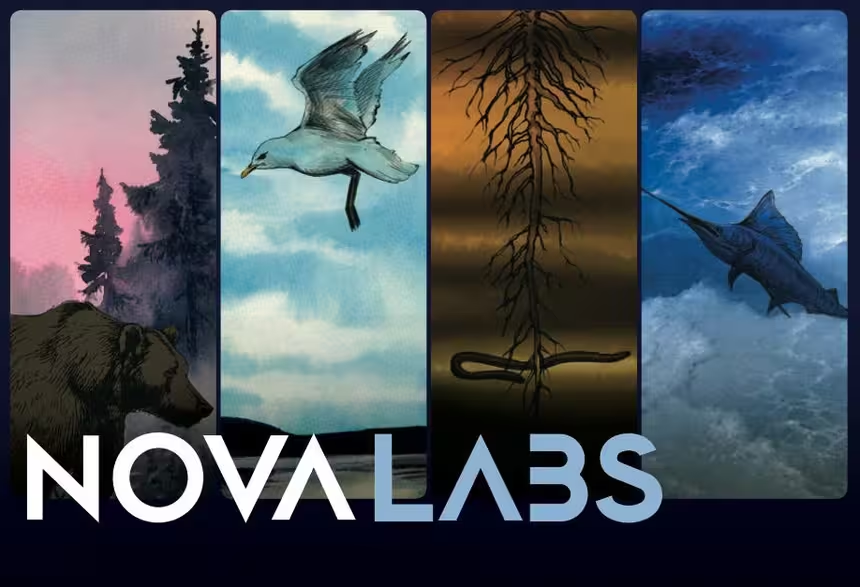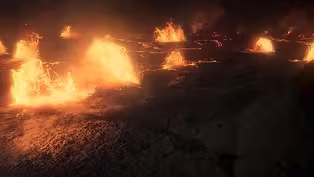
Ancient Earth May Have Had Red Oceans
Clip: Season 50 Episode 11 | 3m 34sVideo has Closed Captions
On Ancient Earth, rust deep in the oceans played a critical role in the formation of Earth
How did oxygen escape from the oceans to form Earth’s atmosphere and create breathable air? Rust played a critical role in the process.
Problems playing video? | Closed Captioning Feedback
Problems playing video? | Closed Captioning Feedback
National Corporate funding for NOVA is provided by Carlisle Companies and Viking Cruises. Major funding for NOVA is provided by the NOVA Science Trust, the Corporation for Public Broadcasting, and PBS viewers.

Ancient Earth May Have Had Red Oceans
Clip: Season 50 Episode 11 | 3m 34sVideo has Closed Captions
How did oxygen escape from the oceans to form Earth’s atmosphere and create breathable air? Rust played a critical role in the process.
Problems playing video? | Closed Captioning Feedback
How to Watch NOVA
NOVA is available to stream on pbs.org and the free PBS App, available on iPhone, Apple TV, Android TV, Android smartphones, Amazon Fire TV, Amazon Fire Tablet, Roku, Samsung Smart TV, and Vizio.
Buy Now

NOVA Labs
NOVA Labs is a free digital platform that engages teens and lifelong learners in games and interactives that foster authentic scientific exploration. Participants take part in real-world investigations by visualizing, analyzing, and playing with the same data that scientists use.Providing Support for PBS.org
Learn Moreabout PBS online sponsorship- This key that we see here is rusty.
And in order to form rust, we need three ingredients.
The first is iron, which is what this key is made of.
The second is water, or water vapor in the air.
And the third crucial ingredient is oxygen.
- [Narrator] And in Earth's early oceans, oxygen began to react more and more with iron and other metals as cyanobacteria spread across the oceans.
(light music) Below the surface it's raining.
As oxygen and iron interact, rust particles form in the water and sink down to the seabed, trapping the oxygen and iron to form solid rock at the bottom of the ocean.
Vast swabs of the water turn red.
- There are many, many ingredients in the ocean at that time that would readily react with oxygen.
- So there was no way for atmospheric oxygen to build up to any significant level.
(birds calling) - [Narrator] A record of the reactions that happened long ago can be seen in formations today.
- This is a sedimentary rock, meaning it's made up of many different layers that were all deposited on the sea floor over millions of years.
- [Narrator] And this sample is evidence of how iron can react to form solid rock.
- This particular sedimentary rock is a banded iron formation, and we can see red color in the rock here, and that red is evidence of iron oxidation, or rust.
- [Narrator] As these reactions continued, the metals in the ocean water started to diminish, locked away in the sea floor.
- Eventually the oceans would've been depleted of the things that would readily react with the oxygen that was being released.
- [Narrator] But cyanobacteria continued to produce oxygen.
(water bubbling) For up to half a billion years this oxygen has been trapped in the oceans.
(water bubbling) But now, increasing amounts are free to escape.
(light music) Over just a few million years, oxygen floods into the atmosphere.
(epic music) The very composition of the atmosphere itself is changing.
(light music)
Video has Closed Captions
Clip: S50 Ep11 | 3m 9s | For millions of years, Earth was a fiery hellscape, inhospitable to life. (3m 9s)
Providing Support for PBS.org
Learn Moreabout PBS online sponsorship
- Science and Nature

Capturing the splendor of the natural world, from the African plains to the Antarctic ice.













Support for PBS provided by:
National Corporate funding for NOVA is provided by Carlisle Companies and Viking Cruises. Major funding for NOVA is provided by the NOVA Science Trust, the Corporation for Public Broadcasting, and PBS viewers.


